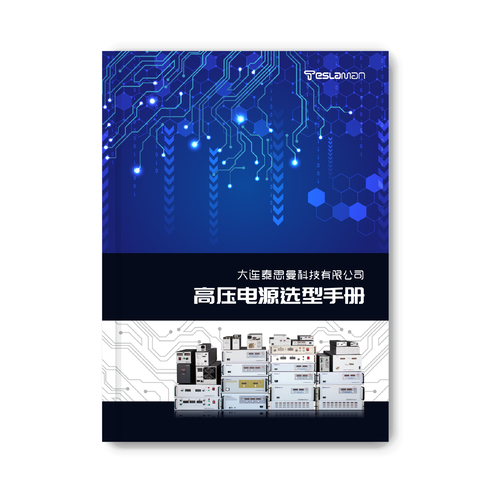New Trends of High-Voltage Power Supplies in Semiconductor Testing
Abstract: With the rapid development of semiconductor technology, the performance and complexity of semiconductor devices have been continuously improved, which has put forward higher requirements for semiconductor testing technology. As a key component in semiconductor testing systems, high-voltage power supplies also present a series of new trends in terms of technology and application. This article will deeply explore the new trends in semiconductor testing from aspects such as the performance improvement of high-voltage power supplies, intelligence and automation, integration with other testing equipment, and adaptability to the testing of new semiconductor devices, aiming to provide comprehensive and in-depth technical references for professionals in the semiconductor testing field.
I. Introduction
The semiconductor industry is one of the core driving forces of modern science and technology. Semiconductor devices are ubiquitous, from smartphones to computer chips, from automotive electronics to artificial intelligence equipment. In the manufacturing process of semiconductor devices, the testing link is of crucial importance, as it ensures that the quality and performance of products meet the design requirements. High-voltage power supplies play the role of providing precise and stable high-voltage excitation signals for the devices under test in semiconductor testing, and the quality of their performance directly affects the accuracy and reliability of test results.
II. Trends in the Performance Improvement of High-Voltage Power Supplies
(I) Higher Voltage Accuracy
In semiconductor testing, the requirement for the voltage output accuracy of high-voltage power supplies is becoming increasingly higher. For example, in the testing of some advanced power semiconductor devices, such as high-voltage MOSFETs and IGBTs, a tiny voltage deviation may lead to inaccurate measurements of key device parameters (such as breakdown voltage, threshold voltage, etc.). To meet this demand, manufacturers of high-voltage power supplies are constantly improving circuit designs and adopting more advanced voltage feedback control technologies to control the voltage accuracy within a very small range. The voltage accuracy of some high-end products can reach ±0.05% or even higher.
(II) Lower Ripple and Noise
Ripple and noise can interfere with test signals and mask the true characteristics of semiconductor devices under test. Modern high-voltage power supplies significantly reduce the ripple and noise levels of the output voltage by optimizing power supply filter circuits, using high-quality capacitor and inductor elements, and advanced shielding technologies. In the testing scenarios of high-frequency semiconductor devices, high-voltage power supplies with low ripple and noise can provide a purer testing environment, which is helpful for accurately measuring the high-frequency characteristics of devices, such as switching characteristics and capacitance characteristics.
III. Trends in Intelligence and Automation
(I) Intelligent Control Interfaces
High-voltage power supplies are gradually equipped with intelligent control interfaces, such as Ethernet, USB, RS-485 and other communication interfaces, which facilitate connection with host computers or test system controllers. Through these interfaces, testers can remotely set the output parameters of high-voltage power supplies (such as voltage, current, pulse width, etc.), monitor the working status of the power supplies in real time (such as output voltage and current values, temperature, fault alarm information, etc.), and can also realize centralized management and control of multiple high-voltage power supplies. This not only improves the testing efficiency but also reduces the risk of human operation errors.
(II) Automated Testing Sequences
With the help of built-in microprocessors and programmable logic controllers (PLCs), high-voltage power supplies can implement automated testing sequence execution. Testers can pre-write test programs, set the output parameters of high-voltage power supplies under different test steps and the collaborative working logic with other testing equipment (such as oscilloscopes, multimeters, etc.). During the testing process, the high-voltage power supplies can automatically adjust the output according to the preset programs and complete a series of complex testing tasks, such as the withstand voltage test, leakage test, characteristic curve scanning of semiconductor devices, etc., without the need for frequent human intervention, which greatly improves the automation degree and repeatability of testing.
IV. Trends in Integration with Other Testing Equipment
(I) Synchronous Integration with Oscilloscopes
In the testing of the dynamic characteristics of semiconductor devices, the synchronous operation of high-voltage power supplies and oscilloscopes has become increasingly important. Through dedicated synchronous trigger signal interfaces and software protocols, high-voltage power supplies can achieve precise synchronous operation with oscilloscopes. When the high-voltage power supply outputs a specific pulsed voltage signal to drive the semiconductor device under test, the oscilloscope can accurately capture the response waveform of the device under this excitation, such as the current change waveform and the voltage transient waveform, thus facilitating testers to conduct in-depth analysis of the dynamic characteristics of the device, such as the measurement of parameters like switching speed and reverse recovery time.
(II) Collaboration with Data Acquisition Systems
In order to comprehensively record and analyze various data in the semiconductor testing process, the collaboration between high-voltage power supplies and data acquisition systems has become increasingly close. High-voltage power supplies transmit the real-time data of output voltage and current to the data acquisition systems, and the data acquisition systems integrate, store and analyze these data as well as the data from other testing equipment. In this way, testers can obtain the complete performance data of semiconductor devices under different test conditions, providing rich data support for the performance evaluation, quality analysis and optimal design of devices.
V. Trends in Adaptability to the Testing of New Semiconductor Devices
(I) Testing of Wide Bandgap Semiconductor Devices
With the rise of wide bandgap semiconductor devices such as silicon carbide (SiC) and gallium nitride (GaN), due to their characteristics of higher breakdown voltage, lower on-resistance and faster switching speed, new challenges have been posed to high-voltage power supplies. High-voltage power supplies need to be able to provide higher voltage output (the testing of some SiC devices may require thousands of volts of high voltage) as well as faster rising and falling edges of pulses (to meet the testing requirements of the high-frequency switching characteristics of GaN devices), while also ensuring stability and reliability under high-voltage and high-frequency pulse conditions.
(II) Testing of Microand Nano-Semiconductor Devices
In the field of microand nano-semiconductor devices, such as nanoscale transistors and microelectromechanical systems (MEMS), due to the tiny size of the devices, their testing requires finer voltage control and higher measurement resolution. High-voltage power supplies need to have the ability to adjust the output voltage in smaller voltage steps and be able to accurately adjust the output voltage at the microvolt or even nanovolt level to accurately measure the weak electrical characteristics of these microand nano-devices, such as tiny changes in threshold voltage and current characteristics in the sub-threshold region.
VI. Conclusion
In summary, with the continuous innovation and development of semiconductor technology, high-voltage power supplies present multiple new trends in the field of semiconductor testing. From the performance improvement aspects such as high precision, low ripple and noise, to the intelligent and automated control and testing sequence execution, and then to the in-depth integration with other testing equipment and good adaptability to new semiconductor devices, these trends are all aimed at meeting the increasingly complex and strict semiconductor testing requirements. Semiconductor testing engineers and related technical personnel need to closely follow these new trends, reasonably select and apply high-voltage power supplies to ensure the high-quality testing of semiconductor devices and the continuous progress of the industry. In the future, as semiconductor technology continues to evolve towards higher performance, smaller size and more complex functions, high-voltage power supplies will surely continue to innovate and develop and play a more critical role in the field of semiconductor testing.




















